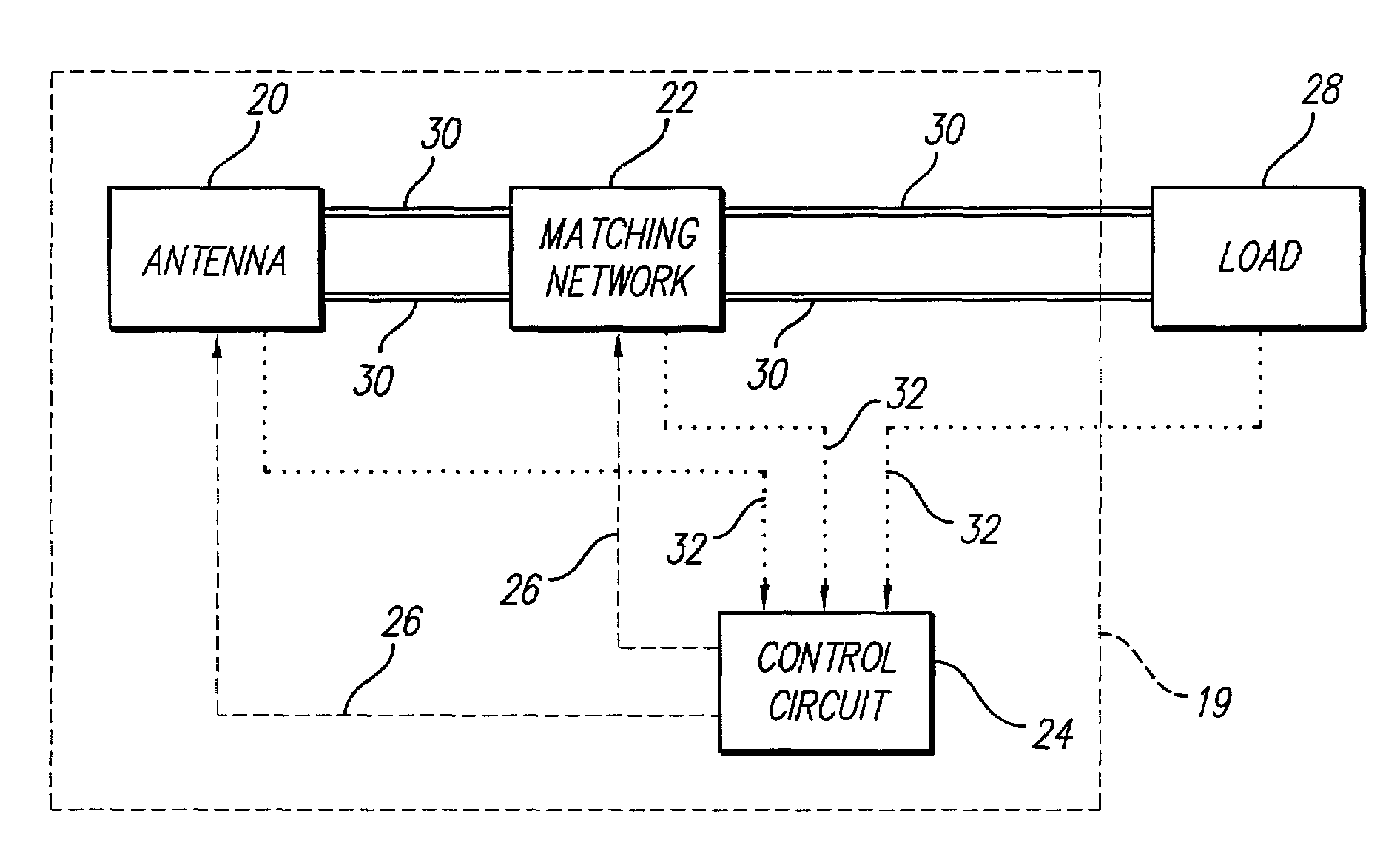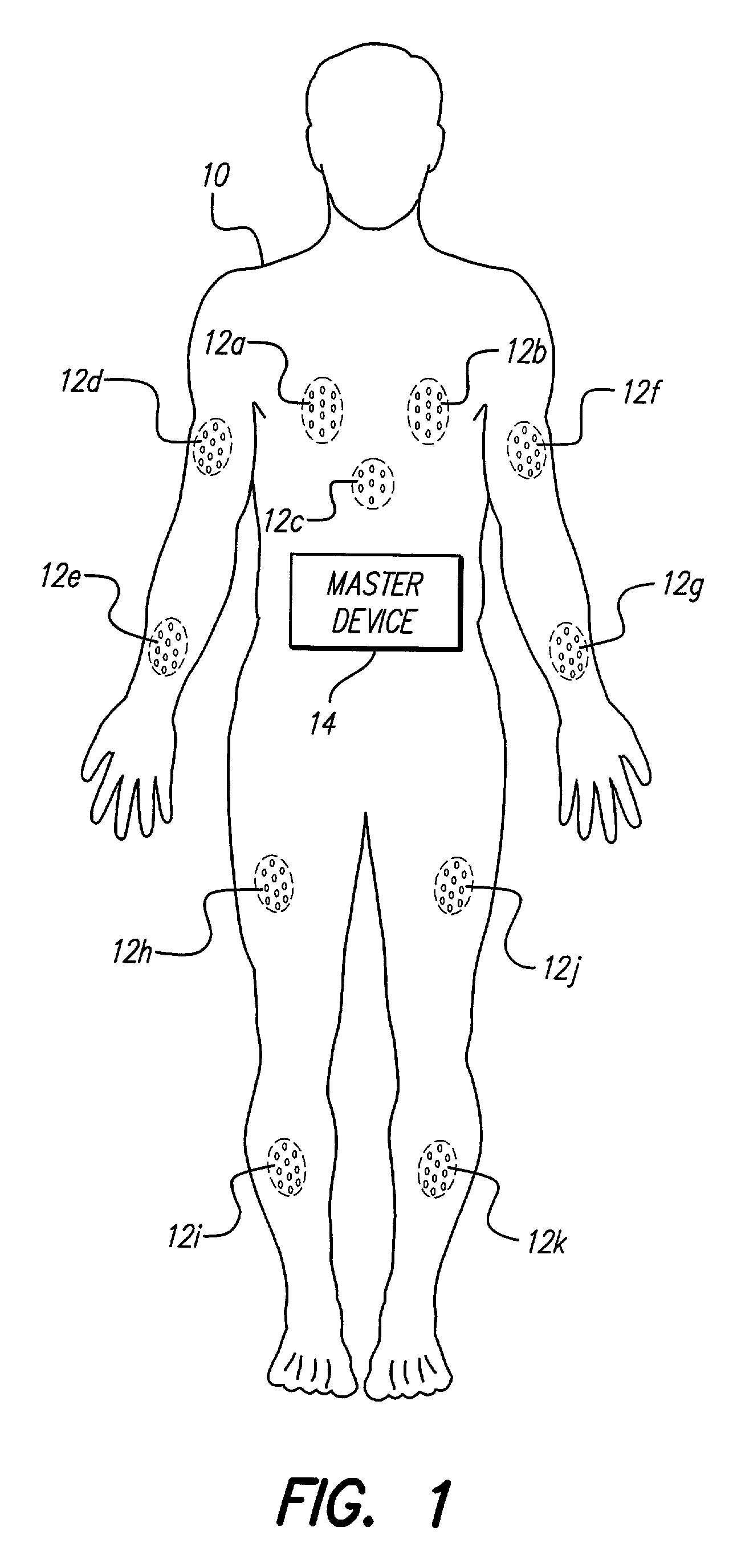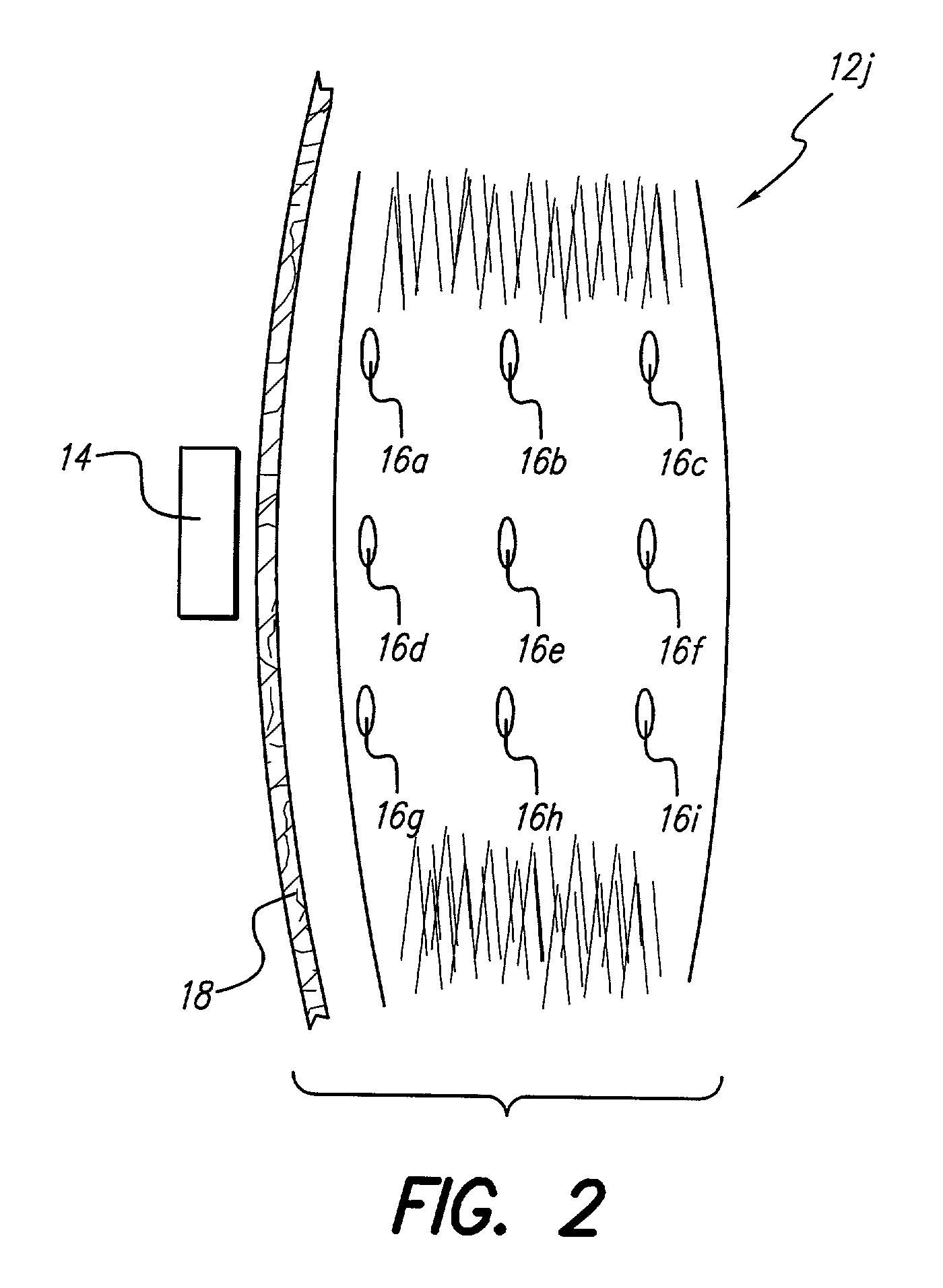RF-energy modulation system through dynamic coil detuning
a dynamic coil and energy modulation technology, applied in the field of implantable medical devices, can solve the problems reducing the power drawn from the master device, and reducing so as to reduce the energy reduce the coupling, and reduce the effect of limiting the power received by the slave devi
- Summary
- Abstract
- Description
- Claims
- Application Information
AI Technical Summary
Benefits of technology
Problems solved by technology
Method used
Image
Examples
Embodiment Construction
[0026]The following description is of the best mode presently contemplated for carrying out the invention. This description is not to be taken in a limiting sense, but is made merely for the purpose of describing the general principles of the invention. The scope of the invention should be determined with reference to the claims.
[0027]A Functional Electrical Stimulation (FES) system generates electrical signals to stimulate nerves and muscles to provide movement for paraplegics, quadriplegics, and other individuals with a neural lesion, a neuro degenerative disease, or other physical condition depriving the patient of the use of the muscles. Similarly, heart or lung muscles may be stimulated to provide the appropriate blood flow and oxygen for various activities, and various sensors may be implanted to monitor body functions. A master device 14 of an FES system centrally carried on a patient 10 is shown in FIG. 1. The master device 14 includes a primary antenna to transmit power and...
PUM
 Login to View More
Login to View More Abstract
Description
Claims
Application Information
 Login to View More
Login to View More - R&D
- Intellectual Property
- Life Sciences
- Materials
- Tech Scout
- Unparalleled Data Quality
- Higher Quality Content
- 60% Fewer Hallucinations
Browse by: Latest US Patents, China's latest patents, Technical Efficacy Thesaurus, Application Domain, Technology Topic, Popular Technical Reports.
© 2025 PatSnap. All rights reserved.Legal|Privacy policy|Modern Slavery Act Transparency Statement|Sitemap|About US| Contact US: help@patsnap.com



